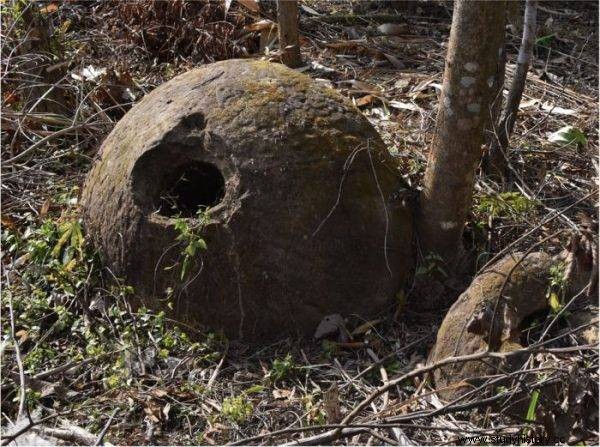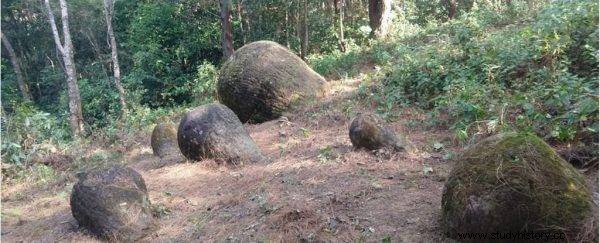In India, scientists discovered giant and mysterious jars that in ancient times could be used for human burial. However, it is not known who might have created them.
A total of 65 rings made of sandstone were discovered. They are scattered in four locations in the northeastern state of Assam. They differ in shape and size.
The discovery increases the number of already known megalithic sites in Assama to eleven. Similar ones were also found in Laos and Indonesia. They are dated from the second millennium BC to the 13th century AD. Human remains found in and around Laos jars suggest that they may have been used for funeral practices .
- The size and structure of the jars / jars found in Assam and Laos are very similar. However, there is some variation in shape and size. The ones from Assam are bulbous, the ones from Laos are more cylindrical - said Nicholas Skopal, a scientist at the Australian National University who was part of the research team.

There are probably many more jars in the heavily forested highlands of Assam
The megalithic jars in Assam were first formally described by British officials Philip Mills and John Henry Hutton, who reported six locations in 1929 . The seventh site was only discovered during the 2016-2017 expedition that was part of the work to relocate and catalog the sites described by Mills and Hutton.
The time is pressing
The work by archaeologist Tilok Thakuria of North Eastern Hill University in India was resumed in 2020. Initially, the team only explored three sites, but over time decided to comb through these densely forested areas. It was then that new jars were found.
In a total area of 300 square kilometers, with seven previously known sites, 797, differently preserved rings have been identified. They seem to have been set on purpose in hills overlooking the lowlands . Moreover, archaeologists have found no sources of sandstone from which the rings are made in the vicinity of any of these sites.
Details of the latest discovery, involving scientists from three universities in India and Australia, were published last week in the Journal of Asian Archeology. The research was led by Tilok Thakuria of North-Eastern Hill University and Uttam Bathari of Gauhati University.
- We still don't know who made the giant jars or where he lived. All of this is a mystery. We do know the stories of the Naga people (an ethnic group in Northeast India) of finding Assam jars filled with cremated remains, beads and other material artifacts - adds Skopal.

The megalithic jars in Assam were first formally described by British officials Philip Mills and John Henry Hutton, who in 1929 reported six locations
There are probably many more jars in the heavily forested highlands of Assam. After all, the team was searching a limited area. Finding new sites may give archaeologists an answer to the question of what they were used for. It can also help you learn about the heritage of the mysterious people who made them. However, researchers must hurry.
- The longer it takes us to look for others, the more likely they will be destroyed as more and more crops are planted in these areas and forests are cut down - says one of the researchers.
May time be your ally.
